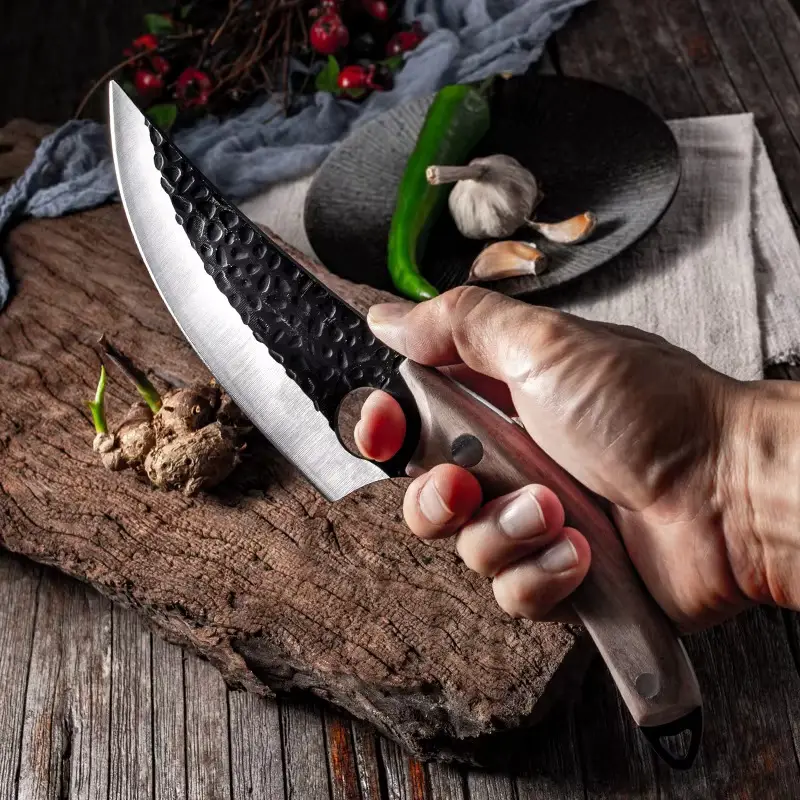Injera with lentils is a perfect introduction to Ethiopian cuisine, offering a harmonious blend of textures and flavors. The tangy, spongy nature of Injera, paired with the hearty and protein-packed lentils, creates a satisfying meal that is both comforting and nutritious. This dish is typically enjoyed in Ethiopian culture as part of a communal meal, where the Injera is used to scoop up the lentils and other stews, making the dining experience interactive and fun.
The key to achieving the authentic taste of Injera is the fermentation process, which gives it its distinct sour flavor. Teff flour, a gluten-free ancient grain, is the primary ingredient for making Injera. It adds a nutty taste and a dense texture, which perfectly complements the lentils. The lentils themselves are seasoned with traditional Ethiopian spices such as berbere (a blend of chili peppers, garlic, ginger, and other spices) and turmeric, resulting in a bold, aromatic dish.
Injera with lentils is not only packed with flavor but is also a healthy choice. Teff flour is rich in protein, fiber, and minerals like iron and calcium. Lentils are an excellent source of plant-based protein and are high in fiber, which aids digestion and promotes heart health.
In the following guide, we’ll walk you through the process of making both Injera and lentils, ensuring that you can recreate this delightful dish at home with ease. Whether you’re already familiar with Ethiopian food or new to this cuisine, Injera with lentils is sure to become a favorite in your culinary repertoire.
Ingredients
Creating Injera with Lentils requires a few key ingredients that contribute to its distinctive taste and nutritional profile. Below are the ingredients you’ll need to prepare this dish:
For Injera:
- 1 cup teff flour
- 1.5 cups water
- 1/4 tsp salt
- 1/2 tsp baking soda
For Lentils:
- 1 cup red lentils
- 1 onion, chopped
- 2 garlic cloves, minced
- 1 tsp turmeric
- 1 tsp cumin
- 2 cups vegetable broth
- Salt and pepper to taste
- Olive oil for cooking
Instructions
Follow these steps to prepare the perfect Ethiopian Injera with Lentils:
1. Make Injera:
- In a mixing bowl, combine teff flour, water, salt, and baking soda. Stir the mixture until smooth and let it sit for 12-24 hours to allow fermentation. This process is crucial for developing Injera’s signature tangy flavor and spongy texture.
- Once fermented, heat a non-stick pan over medium heat. Pour a ladleful of the batter onto the pan, spreading it evenly to form a thin layer. Cook until bubbles form on the surface and the top is set.
- Cover the pan with a lid to steam the Injera for about 5 minutes. This step ensures that the bread is cooked through and retains its moisture. Remove from heat and set aside.
2. Prepare Lentils:
- Begin by rinsing the red lentils thoroughly under cold water. Cook them in a pot with 2 cups of vegetable broth until they are tender.
- In a skillet, heat a tablespoon of olive oil over medium heat. Add the chopped onion and minced garlic, sautéing until the onion becomes translucent and fragrant.
- Stir in the turmeric and cumin, cooking for an additional minute to release their aromatic flavors.
- Add the cooked lentils to the skillet, mixing well to combine. Season with salt and pepper to taste. Allow the mixture to heat through for a few minutes, allowing the flavors to meld.
3. Serve:
- Place a piece of Injera on a plate and generously spoon the lentil mixture on top.
- Optionally, you can garnish with fresh herbs or a sprinkle of additional spices to enhance the presentation and flavor. Enjoy your homemade Ethiopian feast!
Nutrition Facts
Ethiopian Injera with Lentils is not only a flavorful dish but also a nutritious one. Here’s a breakdown of the nutritional content per serving:
- Calories: ~250
- Protein: ~15g
- Carbohydrates: ~40g
- Fiber: ~8g
- Fat: ~5g
This meal provides a balanced combination of carbohydrates, protein, and fiber, making it an excellent choice for those seeking a wholesome and satisfying option.
How to Serve Injera with Lentils
Injera with Lentils is a beloved dish that not only showcases the rich culinary traditions of Ethiopia but also offers a delightful way to share a meal. Its versatility allows for a variety of serving styles that can enhance the dining experience. Here are some comprehensive serving suggestions that cater to different preferences and occasions:
Traditional Style
The most authentic way to serve Injera with Lentils is to place the lentil mixture directly on top of the Injera. This method allows the flavors of the lentils to seep into the spongy bread, creating a harmonious blend of textures and tastes. To achieve this:
- Prepare the Injera: Use freshly made Injera, which can be either warm or at room temperature. The natural sourness of the Injera complements the earthy flavors of the lentils beautifully.
- Layer the Lentils: Spoon the cooked lentil mixture generously over the Injera. You can use a variety of lentil preparations, such as spicy misir wot (spiced lentils) or more mild variations, depending on your taste preference.
- Garnish: Enhance the presentation by adding a drizzle of olive oil or a sprinkle of fresh herbs like cilantro or parsley. This not only elevates the visual appeal but also adds a fresh flavor dimension.
Side Dishes
To create a well-rounded meal, consider pairing your Injera with a selection of colorful side dishes that add both flavor and nutrition:
- Fresh Salad: A crisp, refreshing salad can provide a contrast to the warm, soft Injera and lentils. Consider a simple salad made of chopped tomatoes, cucumbers, and red onions, dressed with lemon juice and olive oil. You could also include ingredients like avocados or bell peppers for added texture and flavor.
- Steamed Vegetables: Lightly steamed vegetables such as carrots, broccoli, or green beans can add a nutritious component to the meal. Season them with a pinch of salt and a squeeze of lemon to enhance their natural flavors.
- Pickled Vegetables: Tangy pickled vegetables, like carrots or beets, can offer a nice balance to the richness of the lentils. They also add a pop of color to the plate.
Family Style
Serving Injera with Lentils family-style creates a warm and inviting atmosphere, encouraging communal dining:
- Communal Platter: Start by laying a large piece of Injera on a large, flat platter. This serves as the centerpiece of the meal and invites everyone to gather around.
- Present the Lentils and Sides: Place the lentil mixture in the center of the Injera, allowing it to be the focal point. Surround it with bowls of the side dishes you’ve prepared, such as salads, steamed vegetables, and pickles, so guests can serve themselves.
- Encourage Sharing: Provide utensils for serving, but also encourage guests to use pieces of Injera to scoop up the lentils and sides. This not only enhances the communal experience but also aligns with traditional Ethiopian dining customs.
- Beverage Pairing: Consider serving traditional Ethiopian beverages such as Tej (a honey wine) or a light beer to complement the meal. Alternatively, a refreshing herbal tea can provide a soothing finish.
Presentation Tips
To make the dining experience even more special, pay attention to the presentation of the dish:
- Color and Arrangement: Arrange the lentils and side dishes in vibrant colors to create an appealing visual display. Use contrasting colors to highlight the freshness of your ingredients.
- Textural Contrast: Incorporate various textures in your side dishes. For instance, the crunchiness of fresh salad can complement the softness of lentils and Injera.
- Seasonal Touches: If serving during a specific holiday or celebration, consider adding seasonal elements, such as themed decorations or locally sourced ingredients, to make the meal feel unique and festive.
By incorporating these serving suggestions, you can enhance your experience of enjoying Injera with Lentils, creating a memorable meal that celebrates both flavor and tradition.
Additional Tips for Perfecting Your Injera with Lentils
To ensure your Injera with Lentils turns out perfectly, consider the following tips, which will not only enhance the flavor and texture of your dish but also elevate your overall cooking experience:
Fermentation Time
The fermentation time for the Injera batter is crucial in developing the signature tangy flavor that characterizes this Ethiopian staple. Allowing the batter to sit for at least 12 hours is essential, but for the best results, aim for a full 24 hours. This extended fermentation period allows the natural yeasts and bacteria present in the teff flour to break down the starches and sugars, resulting in a complex flavor profile. Keep the batter in a warm, draft-free environment to encourage fermentation—ideal temperatures range from 75°F to 85°F (24°C to 29°C). If your kitchen is cooler, you might consider placing the batter in a slightly warmed oven (with the oven off) to maintain an appropriate temperature.
Batter Consistency
Achieving the right batter consistency is key to making perfect Injera. The batter should be slightly thicker than traditional pancake batter, with a pourable yet somewhat viscous texture. If you find your batter is too thick, gradually add small amounts of water, mixing thoroughly until you reach the desired consistency. Conversely, if the batter is too thin, you can add a bit more teff flour to thicken it. A well-balanced batter will spread easily on the cooking surface, forming the characteristic holes and bubbles that are essential for authentic Injera.
Spice Variations
One of the beautiful aspects of making Injera with lentils is the ability to customize the flavor profile to suit your palate. While the traditional spices used in lentil dishes often include cumin, turmeric, and garlic, feel free to experiment with additional spices to elevate your dish. Consider adding a pinch of cayenne pepper for a kick of heat, or stirring in some ground coriander for an earthy undertone. You might also explore incorporating smoked paprika for a subtle smokiness or ginger for a fresh zing. Tasting as you go will help you find the perfect balance that complements the lentils while enhancing the overall flavor of the Injera.
Storage and Reheating
Injera can be stored in the refrigerator for up to three days, making it a convenient option for meal prep. To preserve its texture and flavor, wrap the Injera in plastic wrap or place it in an airtight container. When you’re ready to enjoy your leftovers, it’s essential to reheat them properly to restore their original softness and pliability. Heat a non-stick skillet over medium-low heat, and place the Injera in the skillet for a few minutes on each side, or until warmed through. This gentle reheating process helps to revive the Injera’s unique texture without making it dry or tough. If you find that your Injera has become a bit stiff, sprinkling a small amount of water on both sides before reheating can help to steam and soften it.
Pairing Suggestions
Finally, consider pairing your Injera with a variety of accompaniments to create a well-rounded meal. Traditional Ethiopian dishes such as misir wot (spicy lentil stew) and gomen (collard greens) complement Injera beautifully. You can also introduce a fresh salad, such as tomato and cucumber salad, to add a crisp, refreshing contrast to the hearty lentils. For those wanting to explore different flavor profiles, try serving your Injera with a spicy salsa or a tangy yogurt sauce. The combination of flavors and textures will enhance your dining experience and showcase the versatility of Injera.
By following these tips, you’ll not only perfect your Injera with Lentils but also create an enjoyable cooking process that allows for creativity and personalization. Enjoy your culinary journey into the delicious world of Ethiopian cuisine!
FAQs
Q: Can I make Injera without teff flour?
A: While traditional Injera is made with teff flour, you can substitute it with a mixture of whole wheat flour and all-purpose flour in a pinch. However, this may alter the flavor and texture slightly.
Q: Is Injera gluten-free?
A: Yes, Injera made with teff flour is naturally gluten-free, making it an excellent option for those with gluten sensitivities.
Q: Can I use different lentils for this recipe?
A: Absolutely! While red lentils cook quickly and have a mild flavor, you can experiment with green or brown lentils for a heartier texture.
Q: How do I know when the Injera is cooked?
A: The Injera is ready when bubbles form on the surface, the top is set, and it easily lifts from the pan with a spatula.
Conclusion
Ethiopian Injera with Lentils is a delightful dish that brings the vibrant flavors of Ethiopia to your table. With its rich history and cultural significance, Injera serves as more than just a bread—it’s a vessel for sharing meals and creating connections. By following this guide, you can enjoy this delicious and nutritious dish at home, impressing family and friends with your culinary skills. Whether you’re new to Ethiopian cuisine or a seasoned fan, Injera with Lentils is sure to become a favorite in your recipe repertoire. Enjoy the journey of flavors and the joy of sharing this authentic meal with loved ones.
Print
Ethiopian Injera with Lentils Recipe
Ingredients
For Injera:
- 1 cup teff flour
- 1.5 cups water
- 1/4 tsp salt
- 1/2 tsp baking soda
For Lentils:
- 1 cup red lentils
- 1 onion, chopped
- 2 garlic cloves, minced
- 1 tsp turmeric
- 1 tsp cumin
- 2 cups vegetable broth
- Salt and pepper to taste
- Olive oil for cooking
Instructions
1. Make Injera:
- In a mixing bowl, combine teff flour, water, salt, and baking soda. Stir the mixture until smooth and let it sit for 12-24 hours to allow fermentation. This process is crucial for developing Injera’s signature tangy flavor and spongy texture.
- Once fermented, heat a non-stick pan over medium heat. Pour a ladleful of the batter onto the pan, spreading it evenly to form a thin layer. Cook until bubbles form on the surface and the top is set.
- Cover the pan with a lid to steam the Injera for about 5 minutes. This step ensures that the bread is cooked through and retains its moisture. Remove from heat and set aside.
2. Prepare Lentils:
- Begin by rinsing the red lentils thoroughly under cold water. Cook them in a pot with 2 cups of vegetable broth until they are tender.
- In a skillet, heat a tablespoon of olive oil over medium heat. Add the chopped onion and minced garlic, sautéing until the onion becomes translucent and fragrant.
- Stir in the turmeric and cumin, cooking for an additional minute to release their aromatic flavors.
- Add the cooked lentils to the skillet, mixing well to combine. Season with salt and pepper to taste. Allow the mixture to heat through for a few minutes, allowing the flavors to meld.
3. Serve:
- Place a piece of Injera on a plate and generously spoon the lentil mixture on top.
- Optionally, you can garnish with fresh herbs or a sprinkle of additional spices to enhance the presentation and flavor. Enjoy your homemade Ethiopian feast!
Nutrition
- Serving Size: one normal portion
- Calories: 250
- Fat: 5g
- Carbohydrates: 40g
- Fiber: 8g
- Protein: 15g



